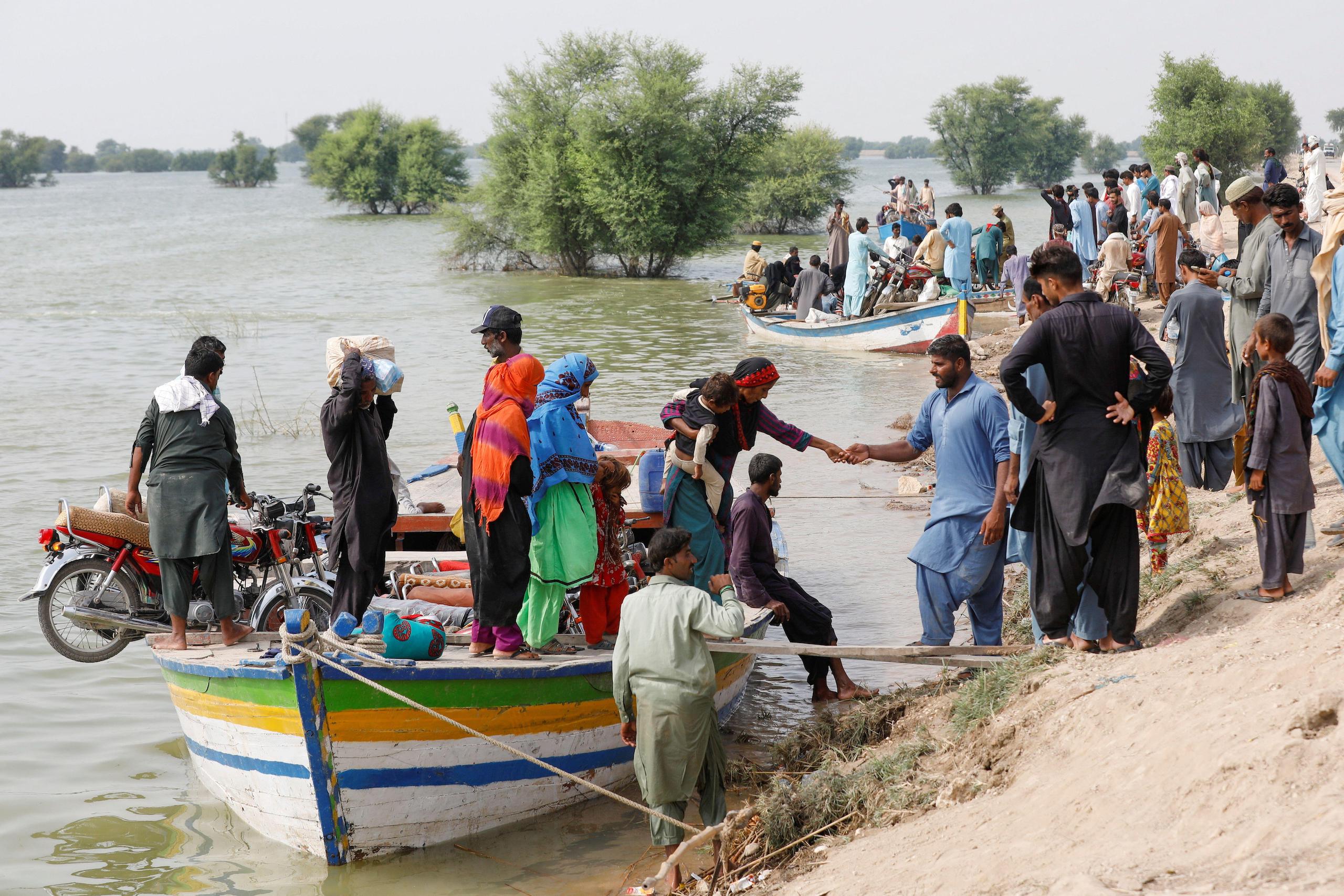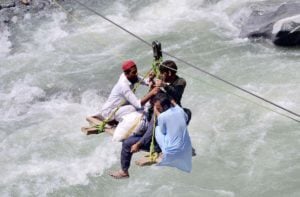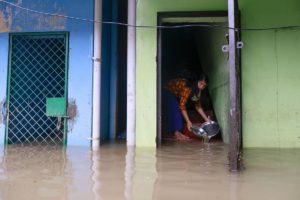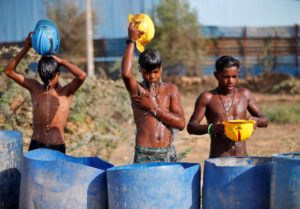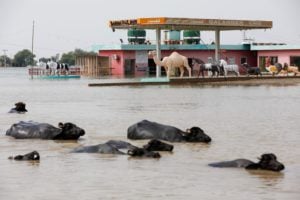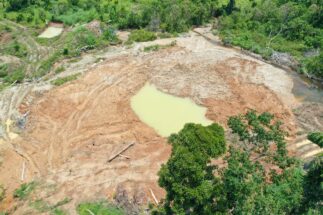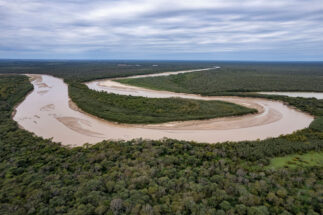This year’s monsoon-season floods left a trail of devastation in Pakistan, leading to more than 1,700 deaths, impacting over 33 million people, and leaving behind damage estimated at around USD 15 billion. The floods, described as a “climate catastrophe” by Pakistan’s climate change minister Sherry Rehman, followed soon after a deadly spring heatwave in South Asia, which saw the highest temperatures recorded in 122 years in parts of the region.
These see-sawing extreme weather events are indicative of a swiftly changing climate, and highlight an urgent need for regional cooperation to adapt and build resilience. The human and economic costs of climate vulnerability are extremely high in South Asia. Floods alone could cost the region as much as USD 215 billion every year by 2030, and by 2050, climate migrants in the region could number up to 40 million. This is a staggering economic dent and an immense challenge for a region still recovering from the pandemic and investing in sustainable and equitable growth.
Weather and climate hazards do not stop at national borders and no country can deal with the magnitude of the challenge on their own
For South Asian countries, the impact of climate change is a shared concern as they are linked by common rivers, ecosystems, and weather systems. They share the Himalaya, Karakoram, and Hindu Kush mountain ranges. Five out of eight countries face rising sea levels. Weather and climate hazards do not stop at national borders and no country can deal with the magnitude of the challenge on their own.
Over 800 million people in South Asia live in projected climate vulnerable hotspots – areas which will be impacted by rising temperatures and extreme weather events by 2050, if intensive carbon emissions continue. Cross-country collaboration in the region could unlock more efficient and effective use of the financial, technical, and human resources required to strengthen climate resilience. Here are a few areas where joint efforts can catalyse impact.
Collaboration on weather services and early warning systems
Reducing risks through preparedness and mitigation is paramount for the region, and establishing effective multi-hazard early warning systems has proved to be an apt and low-cost preparedness measure. High quality weather, climate and hydrological services (or hydromet services) are the foundation of effective early warning systems, empowering individuals and communities threatened by hazards to act in sufficient time to reduce injuries and damages. This might include, for example, informing fishers on the risk of a rough sea event, with enough time to allow them to return back to shore or reroute their journey.
In India, a 2020 study by the National Council of Applied Economic Research (NCAER) found that every dollar invested in ensuring the National Meteorological and Hydrological Services reach farmers, livestock owners, and fishers in India can bring economic benefits worth up to USD 50.
But countries in South Asia face financial, technical, and human resource constraints. This is where collaboration on high quality weather and climate information services can be cemented: countries can share data and scientific knowledge and expertise to build capacity. There is also scope for moving towards joint financing of hydromet information infrastructure which will have shared costs and benefits.
Some collaboration is already underway via the South Asia Hydromet Forum, a regional initiative launched by the World Bank in 2018 that brings together nine hydrological and meteorological agencies from all eight South Asian countries and Myanmar. In 2019, the Forum agreed on a regional strategy to modernise hydromet services in South Asia, improve knowledge sharing and capacity-building, and provide technical assistance to align the region with global standards – laying the groundwork for collaboration towards a climate resilient South Asia.
Sharing knowledge and strengthening coastal resilience
Around 80% of major South Asian cities are exposed to flooding, with rising sea levels increasing the risk in low-lying, densely populated coastal areas. Bangladesh has become a global leader in coastal resilience, having invested in key protective infrastructure like cyclone shelters, embankments and flood control structures, complemented by tree-planting initiatives. With investments in the entire chain of coastal resilience, Bangladesh has reduced deaths from cyclones and floods 100-fold since 1971. Other countries in the region have much to learn from these successes.
On a bilateral level, India and Bangladesh can strengthen collaboration to protect the shared Sundarbans ecosystem, home to the world’s largest mangrove forest, which serves as a natural coastal buffer zone to reduce the impact of cyclones and storm surges. In 2011, a Joint Working Group, with representation from both governments, signed a Memorandum of Understanding (MOU) that outlined the urgent need to collaborate and conserve the ecosystem’s rich biodiversity. Properly implementing this MoU should support mangrove restoration, biodiversity conservation, and protect lives and livelihoods of the area’s vulnerable population.
Scaling innovative technologies
Innovations and technology is another avenue for cross-border collaboration – South Asian countries can foster innovation and climate solutions from the ground up, while sharing and scaling up successful technologies that support climate resilience. The World Bank-supported programmes Tech Emerge and Climate Innovation Challenge connect national, state, and district-level disaster risk management agencies to innovators worldwide to pilot accessible and affordable technologies that can help better prepare for and respond to disasters and the impacts of climate change. Successful pilots will be scaled across borders. Some projects already being implemented include local wi-fi radio in villages in the Indian state of Uttarakhand that features news about weather hazards; a mobile-based application that crowd-sources data on coastal erosion and flooding in the Maldives; and drones for surveillance and mapping to aid disaster preparedness in India.
So, there are signs of cooperation to prepare for climate impacts and disasters in South Asia. But political and national considerations stand in the way of a comprehensive action plan. South Asian countries should factor in climate risks and the benefits of climate cooperation into decision-making processes, from strategy development to budgeting. The development gains of collaboration are immense, and in the face of extreme climate events and major long-term risks, a quest for resilience should not stop at national borders.
This work is part of a collaborative editorial series between the World Bank, ICIMOD and The Third Pole that brings together climate experts and regional voices on “Regional Cooperation for Climate Resilience in South Asia”. The views and opinions expressed by the authors are their own. The series has been funded by the United Kingdom’s Foreign, Commonwealth and Development Office through the Program for Asia Resilience to Climate Change – a trust fund administered by the World Bank.
